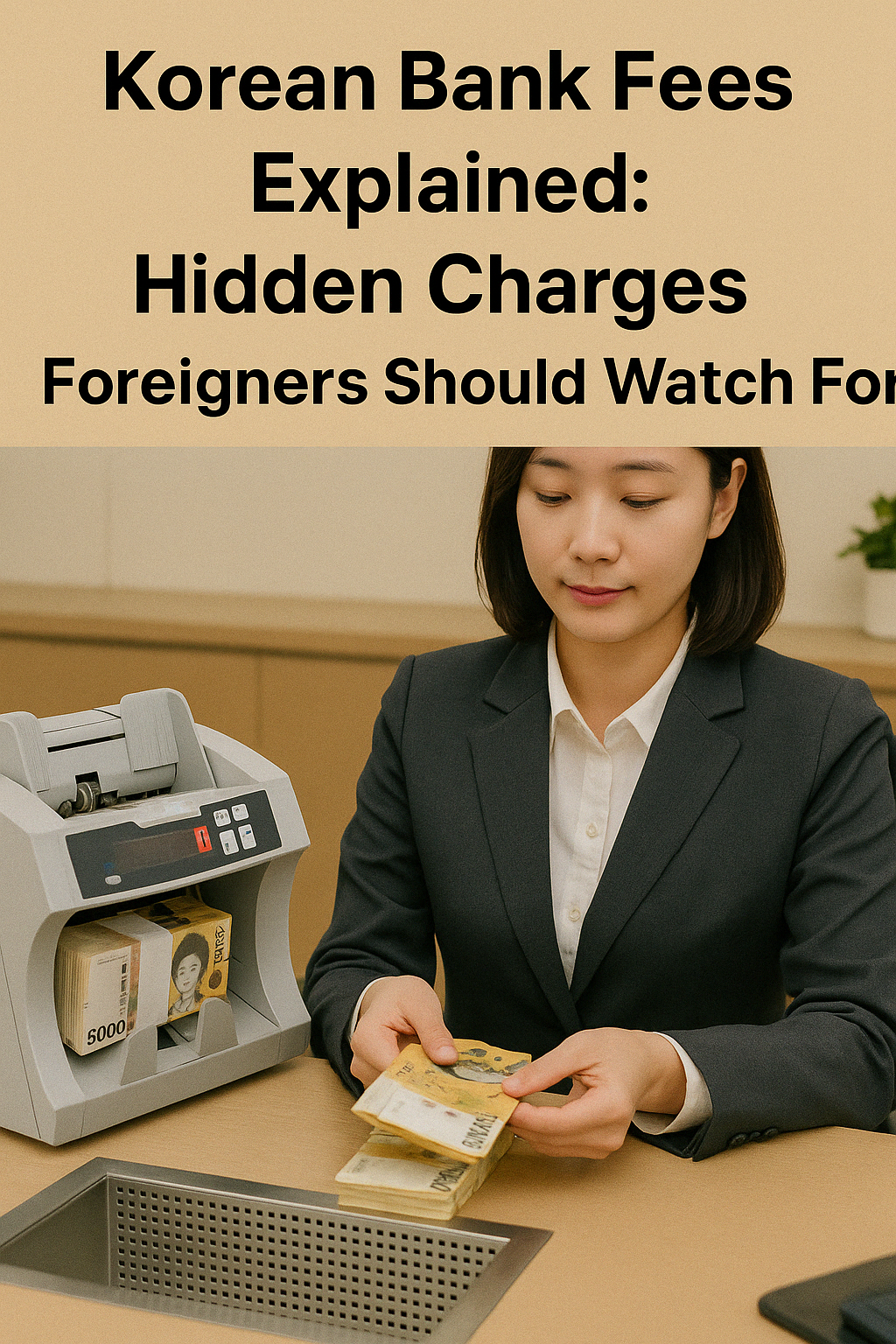Korean Bank Fees Explained: Hidden Charges Foreigners Should Watch For
Introduction
Banking in Korea can seem smooth at first—easy apps, widespread ATMs, and helpful staff. But what many foreigners don’t realize is that behind this convenience lies a maze of hidden fees. This guide breaks down the most common (and overlooked) bank fees foreigners face in Korea and how to avoid them.
1. Most Common Bank Fees in Korea
ATM Usage Fees
₩500–₩1,500 for after-hours withdrawals or using another bank’s ATM.
Account Maintenance Fees
Charged if balance falls below ₩100,000. Often deducted silently.
Interbank Transfer Fees
₩500–₩1,000 per transfer between Korean banks.
Dormant Account Penalties
Inactivity over 1 year = dormancy. Reactivation may involve extra fees.
Reissuance Fees
Lost card/passbook: ₩2,000–₩5,000. Even PIN change may cost money.
2. Hidden Costs Specific to Foreigners
Foreign Currency Handling Fees
Up to 1.5% for currency conversion (USD, EUR). Also applied to international wire transfers.
International Transfer Fees
Includes:
- Outgoing fee (₩10,000–₩30,000)
- SWIFT message fee
- Exchange rate margin
Account Closure Fees
Rare, but possible if closed within 6 months.
3. Real-life Scenarios That Cost You Money
“I withdrew ₩50,000 at night and lost ₩1,200 in fees.”
“My balance dropped under ₩100,000 — got charged monthly.”
“I left Korea and forgot about my account. It went dormant.”
4. How to Avoid Unnecessary Charges
- Use your bank’s ATMs during business hours
- Maintain a healthy minimum balance
- Use mobile apps for alerts
- Bundle transfers into larger amounts
- Close unused accounts
- Compare banks: K-Bank and KakaoBank often have better policies
Conclusion
Korea’s banking system is advanced, but not always transparent.
A little awareness = a lot of savings. Stay informed and keep your money safe.
Next in Series:
👉 [Part 3: How to Exchange Money in Korea – Safely and Cheaply] (Coming Soon)
